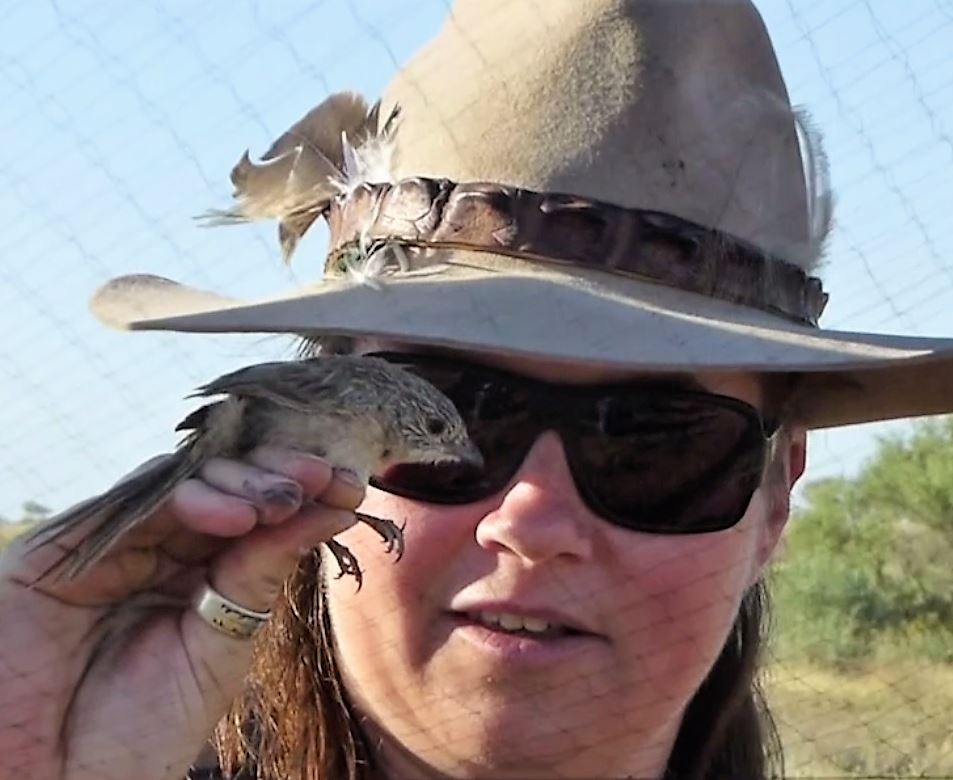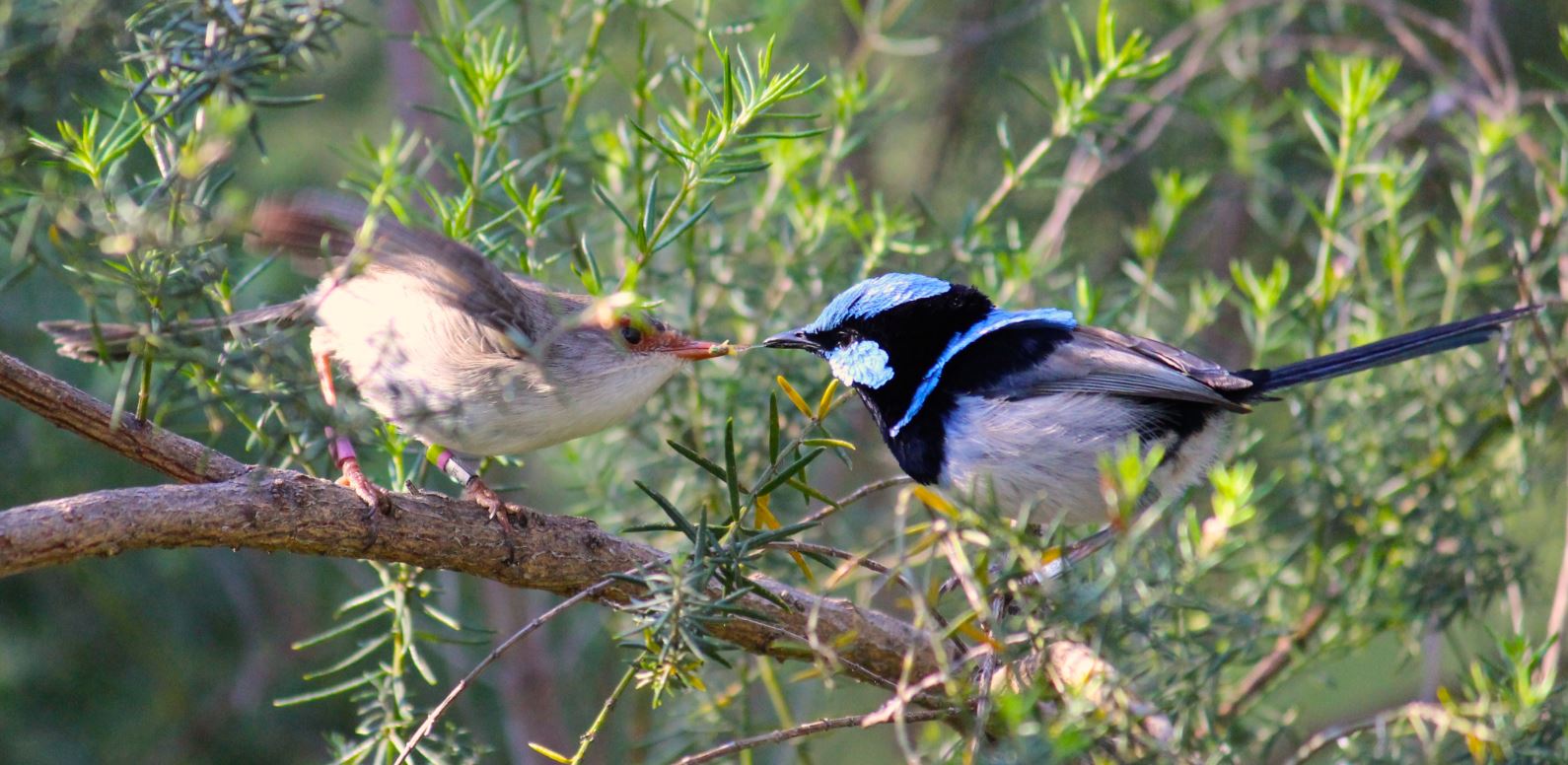
A new study into the Thick-billed Grasswren, a songbird found in parts of outback South Australia and NSW, reveals differences in song made by males from different populations determine their success with attracting females, and are linked with their ability to defend or gain a territory.
The study monitored interactions between two subspecies of Grasswren (Amytornis modestus indulkanna and A. m. raglessi) nesting near the Lake Eyre basin and Oodnadatta Track, and compared differences in their song and behavioural response.
Dr Amy Slender, from Flinders University’s Birdlab, spent over two months in the bush monitoring this notoriously secretive, small and well camouflaged grasswren to expand research into how subspecies interact when they occur in such close proximity.
“Some animals use physical aggression to compete with a rival but songbirds use their beautiful song to compete with other males and attract a mate,” she says.
“It’s just like a talent judging show where if your song isn’t good enough then you will get voted off.
“We found one subspecies was more aggressive in response to an intruders song which could indicate that this subspecies version of the highly pitched call makes it more successful in finding a mate.”
The findings, published in Transactions of the Royal Society of South Australia, are the first evidence that song interaction between two grasswren subspecies is directly linked to population outcomes.
“The song of each subspecies contains unique vocal elements that are absent in the other subspecies despite the fact both populations live near each other,” Dr Slender says.
Although the two subspecies cover a large area of northern SA, they only overlap across a region that is 50km wide. This overlap is located between the South Australian salt lakes, Lake Eyre and Lake Torrens.
“The Thick-billed grasswren is an endangered species so understanding how subspecies remain divergent without any geographic barrier that maintains their distinctiveness is vital to understanding how the species preserves its diversity as this is important for the bird’s long term survival.”
Dr Slender says Thick-billed grasswrens are already threatened by habitat loss- which is particularly concerning for a little bird that can’t fly long distances and are susceptible to becoming isolated between nesting regions.
“Understanding the interaction between an endangered species is important because it informs us about its diversity across South Australia and how well it will adapt to changing environments,”
‘Thick-billled grasswren (Amytornis modestus) songs differ across subspecies and elicit different subspecific behavioural responses,’ (2018) by AL Slender, M Louter, MG Gardner and S Kleindorfer has been published in Transactions of the Royal Society of South Australia.


